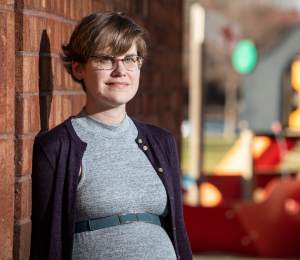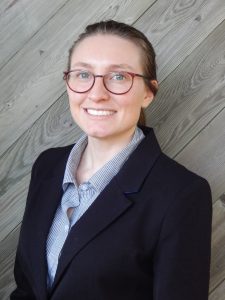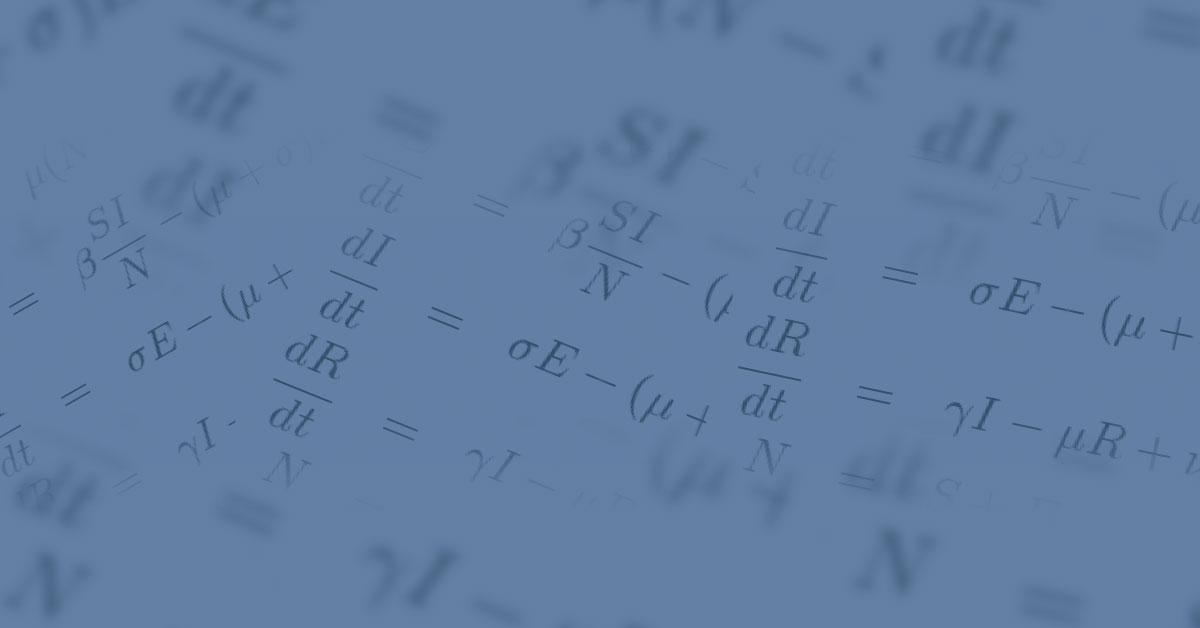Update: The R code underlying the latest version of the model was released publicly on May 13, 2020.
On March 25, Minnesota Governor Tim Walz presented two scenarios describing the state’s future outlook related to the COVID-19 outbreak. One projection showed that cases would peak around April 26 in Minnesota if there were no mitigating steps to slow the virus. The death toll in this scenario could reach 74,000. The other scenario showed a time frame with significant and staged mitigations in place that pushed the peak to about June 29 and projected deaths in the 50,000–55,000 range.

When Walz issued the stay-at-home order for the state two days later, which he recently extended to May 4, he took these projections heavily into account. Both scenarios emerged from mathematical models custom created at the University of Minnesota School of Public Health (SPH) in partnership with the Minnesota Department of Health (MDH) to help Walz make his best decisions. Technical information and source material related to the models are available on the MDH website. An FAQ provides quick answers.
School of Public Health Associate Professor Eva Enns is co-leading the eight-member interdisciplinary team that developed the models along with her colleague Associate Professor Shalini Kulasingam.
Enns usually spends her days evaluating the cost and benefits of infectious disease interventions, mostly for HIV and STIs. Today, she devotes all her time to helping Minnesota be prepared for when COVID-19 cases surge drastically upward.
How to build a model for a brand new disease
Models carry tremendous weight during any global crisis and, depending on how they influence policymakers or even individuals, can make the difference between life and death. Used for COVID-19, they’re meant to show how things can change with varying levels of mitigation in place or ICU beds available, which can move peaks in infections and deaths closer to or further out from the present. Everyone in the U.S. is becoming familiar with their pinnacles and valleys, but how do these models get created?
“People throw around the word ‘model’ a lot and there are a lot of different approaches,” says Enns. “We use a mathematical model with equations to represent the mechanism of how infection spreads.”
The classic equation for modeling infectious diseases such as COVID-19 is called an SEIR model (Susceptible, Exposed, Infectious, Recovered). The Minnesota model adds three more stages representing people who are: hospitalized, in ICU, or dead. The model uses mathematical equations to describe how people move in and out of each stage over time.
“[In this situation] you don’t have the time to validate as much as you normally would. You want to get it right the first time. And your work has to be really, really quick.”
Into the model also go various other elements to more accurately predict progression and spread, such as age, demographics, and underlying conditions. Then researchers run the model to see how the disease mechanism might change with different policies in place, for example, two-, four- or six-week shutdowns or cycling stay-at-home policies on and off. The team uses estimates from China and Europe to craft some parameters for the Minnesota model because U.S. data is still limited. But the model will become ever more state specific as U.S. data grows and Minnesota-centric information becomes more robust.
The team has nearly completed building a dynamic interface for the model, and when it’s sufficiently robust to quickly produce results and generate validated output, it will make it available to the public along with the underlying code. The goal for that release is later in April.
Fast work

Although clouds were gathering on the horizon, it felt like the pandemic storm hit the U.S. over a weekend. The Minnesota modeling process had to be designed, tested, and up and running in less than a week. People working on its continued accuracy have put their pre-pandemic lives on hold.
Before Friday, March 20, Marina Kirkeide, who graduated from the University of Minnesota College of Science and Engineering in 2019, was a School of Public Health part-time research assistant working on HPV transmission for Kulasingam. On a gap year before starting Medical School at the University in fall 2020, Kirkeide also had a second job as a lab tech at St. Paul’s Regions Hospital. That Friday, Kulasingam called her and two other research assistants and asked if anyone was available to “work through the day and night” to get a COVID-19 model to Governor Walz the following Monday. They all jumped at the chance.
“I don’t think a lot of researchers get to work on something over the weekend and have public figures talk about it and make decisions based on it three days later,” says Kirkeide, who had to leave her hospital job to focus solely on modeling. She feels the responsibility of such a big project, too. “[In this situation] you don’t have the time to validate as much as you normally would. You want to get it right the first time. And your work has to be really, really quick.”
“We need to build in uncertainty as a clear message. The trends and impacts of the disease are fairly stable; the exact timing and number of cases are very uncertain.”
Although coronaviruses themselves are not new, each variation of the virus, such as SARS, MERS, and now COVID-19, have no historical precedent, and that makes modeling COVID-19 extra difficult. Kirkeide offers an example of how hard it is to work with unknowns.
“We have a hospitalization count for people with COVID-19 based on age, and we want to put this in the model in a way that makes sense,” she says. “But we can’t use those numbers to figure out a percentage of those hospitalized with COVID-19 at that age, because we don’t know how many people have undetected illness. So we can’t modify a percentage over time in our model if we don’t have a known total.”
Life now
Social distancing and stay at home orders are the critical strategies to keep people safe across all COVID-19 models, but we know very little about them in practice.
To refine COVID-19 model predictions for Minnesota, it will be good to know, Enns says, how well we can do social distancing in Minnesota and how long we can do it well. Can we last a month or six weeks? Do we get better at it as time goes on or does compliance wane? A survey the team plans to conduct with MDH may get at that information as it asks people how their contact patterns have changed since Minnesota’s Stay Home Order.
“We’re figuring out ways to compare what we’re actually seeing with what our model is predicting, then adjusting assumptions about [the course of the virus],” says Enns.
Models offer guidance and show possibilities, and all model makers are quick to add that no numbers are certain. “Models are not crystal balls,” says Stefan Gildemeister, Minnesota’s State Health Economist, who has been Enns’ MDH partner in the modeling project.
“We really want to report things as a range,” says Enns. “We need to build in uncertainty as a clear message. The trends and impacts of the disease are fairly stable; the exact timing and number of cases are very uncertain.”
Modeling is a dynamic exercise and the Minnesota team is continuing to refine the model day by day as new information becomes available to give Walz a more accurate appraisal of the state’s current situation and possible progress. What is certain is that the team will do its best job.
As a modeler, says Kirkeide, you have complete control over what your results look like. The most important thing is to have absolute integrity.
“Yes, numbers may look grim, but they are what we’re getting,” she says. “You can’t argue with what you see.”
_________
Learn more
- SPH COVID-19 science and research stories
- Health in All Matters podcast, Episode 3: “Why Models Matter”
- Minnesota COVID-19 modeling technical information and source material
COVID-19 modeling team at the University of Minnesota:
Eva Enns, associate professor, School of Public Health
Shalini Kulasingam, associate professor, School of Public Health
Richard MacLehose, associate professor, School of Public Health
Kelly Searle, assistant professor, School of Public Health
Kumi Smith, assistant professor, School of Public Health
Ran Zhao, PhD student and research assistant, School of Public Health
Marina Kirkeide, research assistant, School of Public Health
Abhinav Mehta, MS student and research assistant, College of Computer Science and Engineering
Gregory Knowlton, PhD student and research assistant, School of Public Health

